QuestionI have a baby beardie that is approximately 4-6 weeks old and that has been under my care for one week. At first he wouldn't eat but them we got him to eat crickets (crickets are always dusted). He was eating and pooping and was active. He has since lost interest in eating but did poop yesterday, not as active. He seems like he is sleeping, eyes closed a lot. He is still drinking water that we put on his nose and we've been giving him warm baths to keep him hydrated. We tried to feed him green beans/baby food by placing it on his nose and he did eat some 2 days ago. He did not eat much yesterday and nothing so far today. I am worried that the problem is the heat/lighting because we live in an area where the weather changes every day and its been difficult to regulate the proper temps. Here's what we've got: a 40 gallon tank, with 2 digital probe thermometers-one on each side. We have a log that allows our baby to climb up toward the light for heat but the highest point is about 5-10 inches away from the light. The temps have ranged between 80 - 100 degrees but he was doing extremely well and eating alot when it was about 85 degrees in his tank on one side. We are using the ceramic dome light but there is a screen on top of the tank. One light is an exo terra sunglo 75 watt and we have tried either a regular household bulb 60 watt or when temps were dropping, used a exoterra heat glo 75 watt. At night we are using the 75 watt heat glo and the 75 watt night glo. We also have a small heating mat on one side of the tank but some say this is good and some say this is bad. Also using paper towels in tank. Can you tell me if our lighting is okay, if the heating mat should be removed, or if there is anything else we can do to help our baby? Any and all suggestions are much appreciated, we just want our new baby to be healthy and happy and to be with us for years to come. Thanks!
AnswerHi Anita,
You are not alone with the temperature problems. It doesn't matter if you are brand new to reptiles or a seasoned pro, when the temperatures change outside, we all get to play the game with cage temperatures!! Sometimes just switching from a spot to a flood light helps raise temperatures. With spot lights its important to make sure that the light isn't too close as thermal burns can happen quickly with the spot of light/heat bearing down in such a small area on the beardie. Its good he is drinking..that is more important that food actually.
Beardie babies really should not be sold or placed into new homes until they are at least 6 weeks old or 6 inches in total length. When they are too small/young, they tend to stress more.
With a baby beardie, he basically should be eating dozens of small crickets a day, plus a good salad of dark greens. (collards, turnip greens,etc) Try offering smaller crickets....
The most common causes of this is something lacking in their care. Most often, proper basking temperatures. Your temperatures are a bit off for basking(95-105). Since you have the good thermometers, the best is to place one of the probes(if you aren't already) directly under the basking light, at your beardies level to get a true temperature reading.
Great on the paper towels!!!!! The sun glo don't provide a good source of uvb for your beardie. In the care sheet below is more info on good sources of uvb. I recommend the Mega Ray or the T-Rex mercury vapor bulbs for a good uvb source and also heat during the day. Personally, I prefer heat emitters or ceramic heat emitters for night time heat. They produce heat but no light. A bit more on cost in the initial purchase but, last 5 plus years.
Other causes are stress (new home, other animals, etc)internal parasites(which increase with stress), improper sized insects(too large of ones)Feeding more smaller insects is better than offering fewer larger insects. Internal blockages can cause them to not eat. Blockages can be caused by dehydration, to large of insects and eating sand, litter, internal parasites, etc. Is he pooping? If yes, and its on a regular basis, then a blockage is most likely not the problem.
With care, most pet store really give poor advice on the proper care the reptiles need.
I noticed you didn't mention offering your beardy dark, leafy greens. This is a very important part of their diet.
If, after reading the information, he still does not eat, then a vet visit may be needed.
BASIC BEARDED DRAGON CARE:
HOUSING:
For an adult bearded Dragon, a 50 -55 gallon is the smallest recommended tank. For a baby, nothing less than a 30 gallon tank will work for a very short time, so its best to just start out with the adult sized tank....you can add rocks and branches for climbing, being sure to not stack rocks too high to prevent them toppling over. Branches need to be secure. They like to have a hide log or cave too!! All items brought from outside need to be cleaned well before placing them in the BD's tank. To clean them, there are a few methods: to wash in a bleach solution of 1/4 cup of bleach to 1 gallon of water. Let them soak for about an hour, rinse them in hot water several times and then let them dry in the sun until completely dry. If the items are small enough, they can be baked in an over at 200 degrees for about 2 hours, check often to be sure they are not starting to burn. The items can also be boiled(simmered) for 30 minutes or so and then allowed to dry completely before
placing in the tank. I also suggest washing any pet store items such as caves, rocks, branches, etc before placing in the tank as that if the store would happen to have mites they can also be on the items we purchase. Any of the above methods are acceptable for cleaning. CAUTION!!! On store bought branches...be VERY careful with the driftwood pieces that have the holes in them!!! Be sure the holes are small as that if the holes are large, the BD MAY be able to get his head in them but not able to get it back out!!! A secure screen top is necessary for bearded dragons as that also they do not require much height for climbing..they can and do climb!! NEVER USE HEAT ROCKS OR HEATED CAVES!!! They malfunction and cause severe burns and even death!!!!
SUBSTRATES:
Young bearded dragons MUST be kept on paper towels, newspaper or other non particulate(loose) substrate to prevent them from getting any loose substrate into their mouth and swallowing it which can and does cause intestinal blockages.Once the BD is over 10 inches, some people have had good luck using play sand mixed with 50% of peat moss. I prefer the safe substrate of the newspaper, or other non particulate substrate to prevent any problems and also for ease of cleaning.
LIGHTING:
BD's need UVB, which is the special lights that come in fluorescent tubes or special screw in bulbs(mercury vapor)that are designed to produce uvb and heat. The tubes do not produce heat. UVB is needed by the BD to be able to absorb the calcium in the foods they eat. Without the uvb, they will develop metabolic bone disease.
With the tubes, they must say that they produce BOTH uvb and uva. The uvb needs to be 5% or higher. Repti Sun 5.0 and 10.0(not compact) are TWO of the best uvb tubes on the market. The repti glo 8.0's are a great uvb source also. Arcadia 5.0 (UK), which is the uvb tube available in the UK is a good uvb tube. These need to be positioned 6-8 inches(for the 5.0 and 8.0 and 8-10 inches for the 10.0) over the BD so that they get the uvb that is needed. Recommended length of the tube is 24 inches or more. They need to be replaced every 6-9 months as that they stop producing uvb long before they stop producing light. They need to have access to uvb and basking temperatures for 10-12 hours daily. At night, no white lights!!!
There has been new studies that have proven that compact uvb lights, both the spiral/coil type and the ones that look like long "U's" laying on their side and a few other brands are causing what basically amounts to snow blindness in reptiles. To read more on this, you can go to http://www.uvguide.co.uk/index.htm
The link will take you to my discussion group and to a post that tells how to tell the new compacts from the old ones. IF your beardie is using one of the new ones, then the light should not be the problem. http://pets.groups.yahoo.com/group/UVB_Meter_Owners/message/6721
There are tubes and bulbs that say ''full spectrum'' but they do not produce any uvb.
On the mercury vapor , they also produce heat. They also produce the uvb and uva. The best on the market now are the MEGA RAY or the T-Rex. www.reptileuv.com has more information on the Mega Ray lights. When using these, the distance is much greater than the uvb tubes and the directions must be followed that are listed for the light. When using the mercury vapor lights, you don't need to have one light for uvb and one for heat. The Mercury vapor lights provide both.
HEATING AND TEMPERATURES:
Bearded Dragons have specific temperature requirements. For heat when using the uvb producing fluorescent tubes, a regular household lightbulb will work for DAYTIME heat. The wattage needed will vary to each situation such as tank size, room temperatures, air flow. Their basking area temperature must be between 95F and 105F degrees to allow proper digestion of food. Your basking area must be where the uvb light is as well as the heat source. Be sure that the BD cannot get too close to the heat source as that they WILL get burned! The ambient temperature range in the mid 80's . Cool daytime range of normal room temperature of low to mid 70's. Nighttime temperatures in the low to mid 60's is fine. NEVER USE HEAT ROCKS!!!!!!!!!!!!!!!!!!!!! A good digital thermometer is a must. I like using the duel ones with the probe...cost about 15$ at Wal Mart. The probe can be placed in the basking area at the BD's level to monitor this temperature and the main unit can be placed in one of the ambient temperature areas. When reading them, the "out" reading is the probe area.
DIET:
Bearded Dragons eat and need both animal proteins and vegetable matter!!! As young dragons they eat a bit more of the insects. As they get older, as adults their diet is more of the vegetable matter. As young BDs, the diet is about 80% animal proteins and 20% vegetable matter. As they get older, the ratio changes. An adult will eat about 80%-90% vegetable matter and 10-20% animal proteins.
Animal protein sources are: Crickets, superworms, silkworms, roaches, hornworms, waxworms. Waxworms are considered candy to a BD so only feed on occasion in a small amount(2-3 worms). ALL insects must be properly gutloaded for at least 48 hours prior to feeding to the dragon. For crickets and superworms, this can be done with vegetables, plain cereals and commercial foods for the species. Silkworms and the other insects have their own diet needs. Its best to feed the crickets in a separate feeding tank such as a 10 or 20 gallon size tank or container with a well vented lid. This can make it easier for the dragon to catch the crickets and prevents any stray crickets in their "home" tank from deciding to nibble on the BD if he happens to not find them all. If you do feed in his home tank, be sure to place a 1/2 potato in the tank to help prevent the crickets from biting at the BD. ALL insects fed must be no larger than the space between their eyes to prevent choking. Be sure to dust the insects daily(for dragons up to 14-15 inches) (2x wkly there after)with a good calcium source such as Rep Cal calcium powder with no added Phosphorus. Young BD's up to 4 months of age will eat more crickets than anything. At this age they will usually consume anywhere from 10 to 30+ correctly sized crickets three times a day. Be sure to remove any uneaten crickets that are not consumed in a 15-25 minute time frame. For this reason, its easier to use a separate feeding tank for the bearded dragon. A 10 gallon tank(with a screen top) works well. Its best to offer their "salad" of greens/veggies before offering their morning insect feeding when they are hungry to prevent any problems with them preferring NOT to eat their salad. Their salad consists of Collard greens, mustard greens, turnip greens, dandelion greens...... this is the BASE of the green part of their vegetable diet. To this, for variety you can add arugula, escarole, endive,small amounts of bok choy or other Asian greens. For the vegetable part of the diet, green beans, butternut squash, acorn squash(other winter squashes are also acceptable) yams, sweet potato. For color, sweet peppers can also be added in a small amount. For baby BD's, using a food processor for the greens and veggies works well. As they get older, greens should never be larger than about an inch x an inch in size. Never feed lettuces as they have no nutritional value. The hard veggies should be either food processed or grated. Fruits can also be offered in small amounts. Good fruits are figs, papaya, melon, blueberries, strawberries, raspberries....and many other fruits... these need to be mashed or chopped. Watermelon is a good source of water for the dragon. Their salad can be dusted once or at the most, twice a month with a good vitamin supplement such as RepCal HerptiVit. This is by no means a complete list of foods the dragons can eat.You can also offer baby food chicken or small bits of boiled chicken.
Be sure to provide a dish of FRESH drinking water at ALL times!!! Misting their salad will also help get much needed water into them. NEVER FEED any MICE or other mammals to your Dragon!!!
WATER:
As stated above, always provide a dish of drinking water and mist their salad. You can also bathe your dragon a few times a week. (many bathe them daily for "bathroom duties") Temperature of the water should be between 85 and 95 degrees. The depth should never be any deeper than to cover his back when laying FLAT!!! Never leave them unattended at bath time to prevent possible drowning. Many love to soak and swim for 15 minutes or more. Never bathe less than two hours before his basking lights go out. Doing so can cause him to become too chilled, risking the chance of a respiratory infection.
A vet check up is recommended and a fecal sample taken in to be tested for any internal parasites.... To find a qualified vet in your area you can go to
http://www.herpvetconnection.com
http://www.arav.org/ECOMARAV/timssnet/amm/tnt_mdsearch.cfm
http://www.anapsid.org/vets/
More in-depth care info can be found at:
http://www.bio..miami.edu/ktosney/file/BDcare.html
http://www.sundialreptile.com/care%20sheet--bearded%20dragon.htm
http://www.blackninjakitty.com/herps/dragons
Most bearded dragons will take long naps (generally,if they are over a yr) in the fall.. this is called Brumation. is a form of hibernation. You can read more about that at
http://www.exclusivedragons.com/Brumation.html be sure to read this link as it tells you what to look for in brumation vs illness.
http://www.bio.miami.edu/ktosney/file/BDbrumate.html
http://worldofbeardeddragons.blogspot.com/2006/11/bearded-dragon-brumation-bruma...

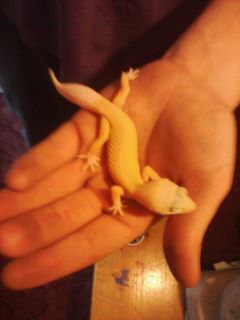 lizards
Questionfrankie the lizard
QUESTION: What kind o
lizards
Questionfrankie the lizard
QUESTION: What kind o
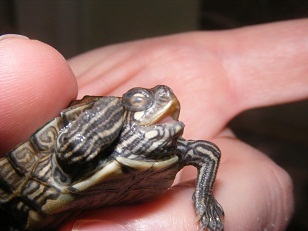 my turtles mouth
Question
my turtle
my baby turtle as a mouth problem, I
my turtles mouth
Question
my turtle
my baby turtle as a mouth problem, I
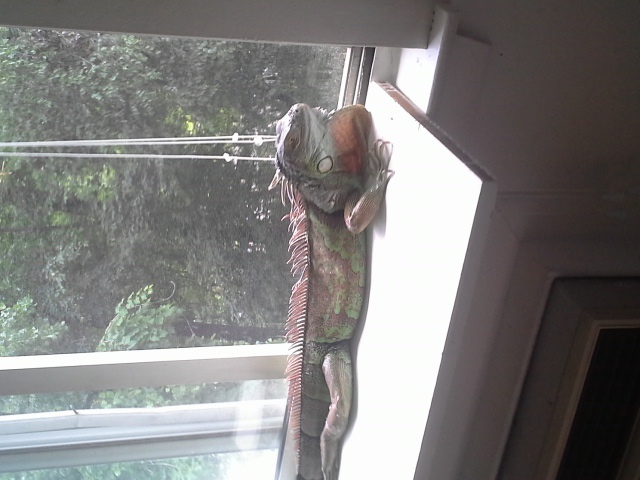 Iguanas
Question
earl two rescues
Hello I have fe
Iguanas
Question
earl two rescues
Hello I have fe
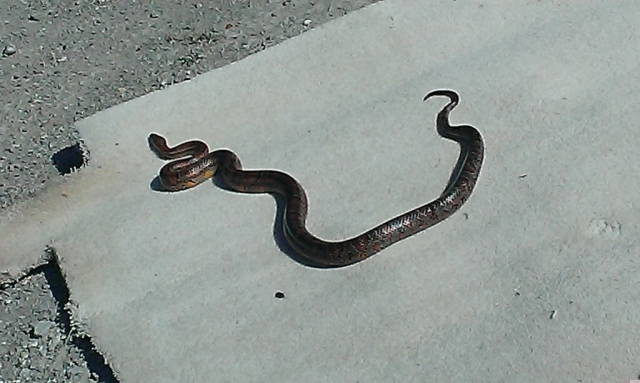 Snake ID
Question
Snake Snake
Can you tell me hat k
Snake ID
Question
Snake Snake
Can you tell me hat k
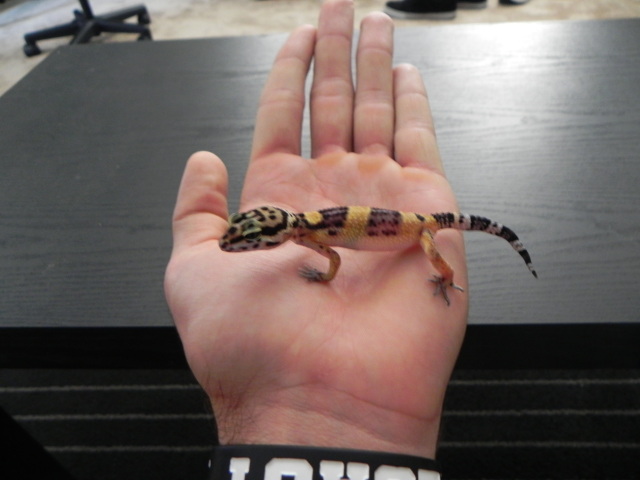 Leopard Gecko... Parasites ?
QuestionMy Gecko
QUESTION: HI Tracie,
I recentl
Leopard Gecko... Parasites ?
QuestionMy Gecko
QUESTION: HI Tracie,
I recentl